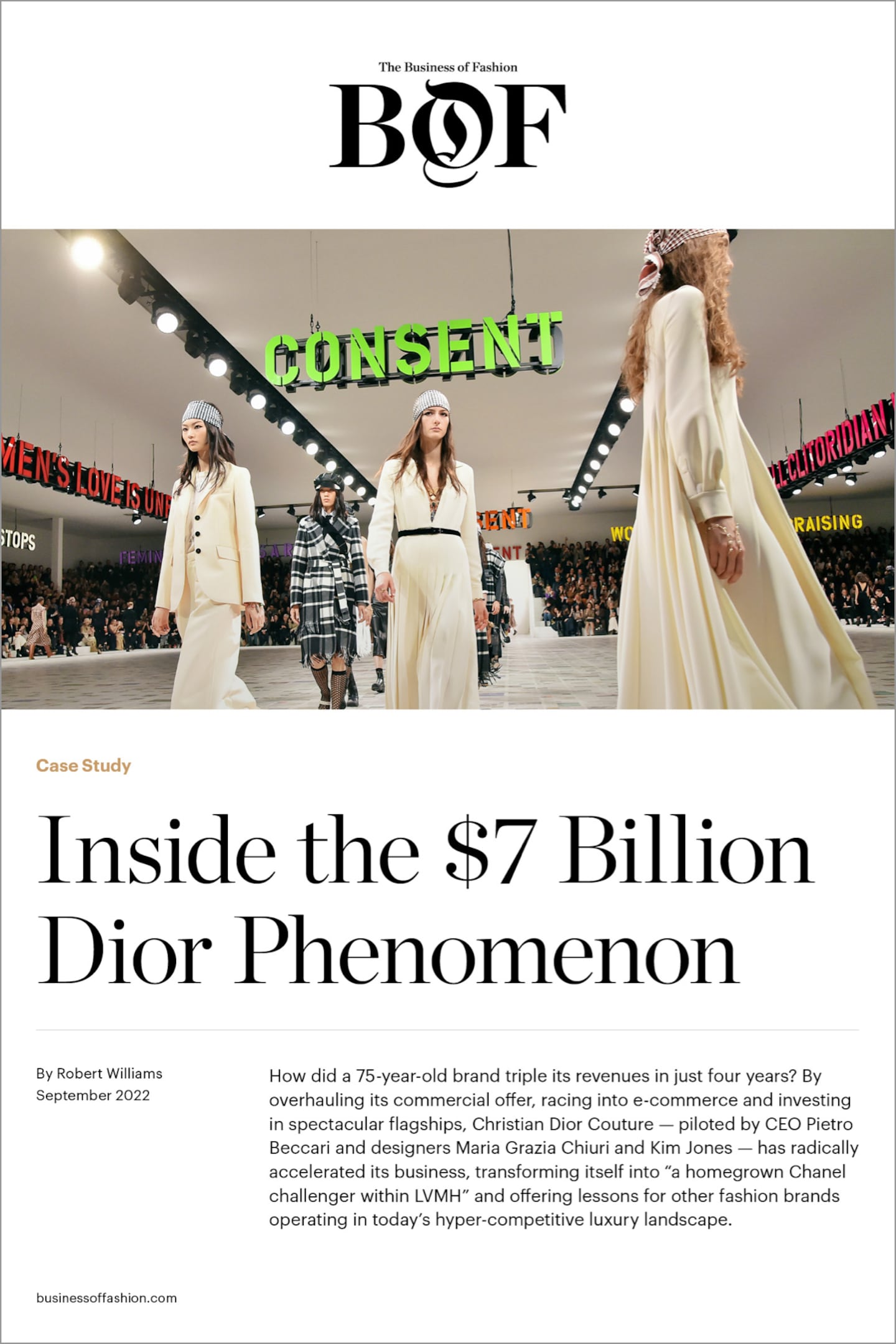
The Business of Fashion
Agenda-setting intelligence, analysis and advice for the global fashion community.

Agenda-setting intelligence, analysis and advice for the global fashion community.

In 1947, mere months after its founding, Christian Dior Couture revolutionised women’s dressing with its post-war “New Look,” securing a place at the pinnacle of French fashion. Later, Dior became the cornerstone of the luxury empire of LVMH chairman Bernard Arnault, who has invested in the house with a “sky’s the limit” approach since the 1980s. But for many years, Dior’s brand, one of modern luxury’s most famous and prestigious marks, remained bigger than its business.
In 2017, LVMH took full control of Christian Dior, kicking off a series of moves that would radically accelerate the business. Under new chief executive Pietro Beccari and designers Maria Grazia Chiuri and Kim Jones, Dior’s business has grown rapidly, with sales roughly tripling since the deal. Its newfound scale has created a virtuous cycle, allowing it to invest even more in spectacular runway shows and sprawling boutiques, all while multiplying estimated profits by a factor of seven. As Dior edges closer to overtaking its historic rival, Bernstein analyst Luca Solca dubbed it “a homegrown Chanel within LVMH.”
This case study examines how Dior became one of luxury fashion’s fastest-growing and most profitable businesses. The company overhauled its product offer and communications: extending a culture of couture craftsmanship and innovation which had long animated its theatrical runway collections, and applying them throughout its commercial lines to create a diversified menu of hit products. The company also raced into e-commerce, rapidly extending its reach beyond the shopping capitals where it operates stores, and rolled out immersive, spectacular flagships to serve as a destination for a broad range of brand devotees, from aspirational tourists to top-spending “VICs.” As the coronavirus hammered sales for most fashion companies, Dior leaned into its momentum by continuing to stage major marketing moments that engaged homebound consumers watching online and fuelled post-pandemic growth.
The strategy appears to be paying off: Dior has rapidly scaled from around €2.2 billion ($2.5 billion) in revenue in 2017 to €6.6 billion in 2021, according to estimates, with the strong growth putting it closer than ever to overtaking mega-brand rivals like Gucci, Hermès or even luxury titan Chanel. With an operating margin above 35 percent of sales, the brand is likely now the fourth most-profitable listed luxury fashion brand, after LVMH stablemate Louis Vuitton, Kering’s Gucci and Hermès.
ADVERTISEMENT
Click below to read the case study now.
Created exclusively for BoF Professional members, case studies explore the important challenges facing the industry today. Discover more case studies and reports from The Business of Fashion here.
Disclosure: LVMH is part of a group of investors who, together, hold a minority interest in The Business of Fashion. All investors have signed shareholders’ documentation guaranteeing BoF’s complete editorial independence.
Brands from Valentino to Prada and start-ups like Pulco Studios are vying to cash in on the racket sport’s aspirational aesthetic and affluent fanbase.
The fashion giant has been working with advisers to study possibilities for the Marc Jacobs brand after being approached by suitors.
A runway show at corporate headquarters underscored how the brand’s nearly decade-long quest to elevate its image — and prices — is finally paying off.
Mining company Anglo American is considering offloading its storied diamond unit. It won’t be an easy sell.